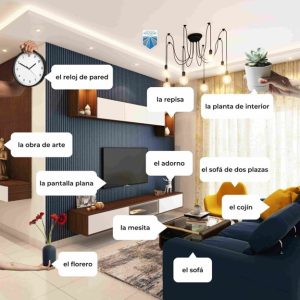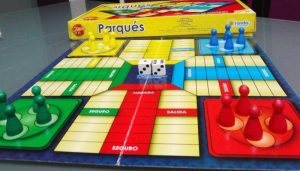
Dreaming of becoming fluent in Spanish? You don’t need to book a flight to Spain or Colombia! By creating a Spanish-speaking environment at home, you can accelerate your language-learning journey. Let’s dive into practical tips to transform your living space into an immersive language lab.
Speak Spanish Daily
Start speaking Spanish at home as much as possible. You’ll enhance your vocabulary and get comfortable with everyday phrases.

Label items around your house in Spanish. You’ll learn the names of common objects and reinforce your vocabulary daily.
Set specific goals for using Spanish daily. You could start with 30 minutes a day and gradually increase the time.
Engage with Spanish Media
Watch Spanish TV shows and movies. You’ll improve your listening skills and get familiar with different accents and dialects.
Play Spanish music throughout the day. Singing along can improve your pronunciation and introduce you to new vocabulary.
Read Spanish books, newspapers, and articles. You’ll enhance your reading skills and gain insight into Spanish-speaking cultures.
Practice Writing in Spanish

Start a journal where you write in Spanish daily. This practice helps improve your writing skills and express your thoughts in Spanish.
Write your shopping lists in Spanish. This simple activity reinforces vocabulary related to everyday items and tasks.
Leave notes for family members in Spanish. These small interactions can help you practice writing and make learning fun.
Create a Spanish Learning Space
Set up a dedicated space for learning Spanish. Fill it with books, flashcards, and other resources to keep you motivated.
Decorate your learning space with Spanish posters and charts. Visual aids help you remember vocabulary and grammar rules.
Incorporate tools like whiteboards and language apps. These tools make learning interactive and engaging.
Play Language Games

Play board games designed for learning Spanish. Games make learning fun and interactive for the whole family.
Language apps provide a variety of games and exercises. You’ll reinforce your skills with interactive and enjoyable activities.
Challenge your family to flashcard games. This helps with quick recall and keeps everyone engaged in learning.
Involve the Whole Family
Make a rule to speak only Spanish during meals. This practice encourages everyone to participate and learn together.
Plan nights dedicated to Spanish culture. Cook Spanish meals, watch Spanish movies, and play Spanish music to immerse yourself fully.
Support each other’s learning journey. Share new words, correct mistakes kindly, and celebrate progress together.
Join Online Communities
Join forums and online communities where you can practice Spanish. You’ll connect with other learners and native speakers.
Attend virtual language exchange sessions. These sessions offer a great opportunity to practice speaking with people from around the world.
Follow Spanish-speaking influencers and pages. You’ll get exposure to colloquial language and stay updated on cultural trends.
Embrace Cultural Activities
Try cooking traditional Spanish recipes. You’ll learn food-related vocabulary and enjoy delicious meals.
Celebrate Spanish holidays and festivals. Understanding cultural traditions adds depth to your language learning.
Learn about Spanish art and history. Visit virtual museums and watch documentaries to enrich your knowledge.
Consistency is Key
Establish a regular schedule for practicing Spanish. Consistency is crucial for making steady progress.
Keep track of your learning milestones. Celebrate your achievements to stay motivated and see how far you’ve come.
Learning a new language is a journey. Stay positive, be patient with yourself, and enjoy the process of becoming fluent in Spanish.
Final Thoughts
Create an engaging and enjoyable environment. The more fun you have, the more motivated you’ll be to continue learning.
Language learning takes time. Be patient with your progress and celebrate every small victory along the way.
Fully immerse yourself in the Spanish language and culture. The more you surround yourself with Spanish, the faster you’ll learn. ¡Buena suerte!